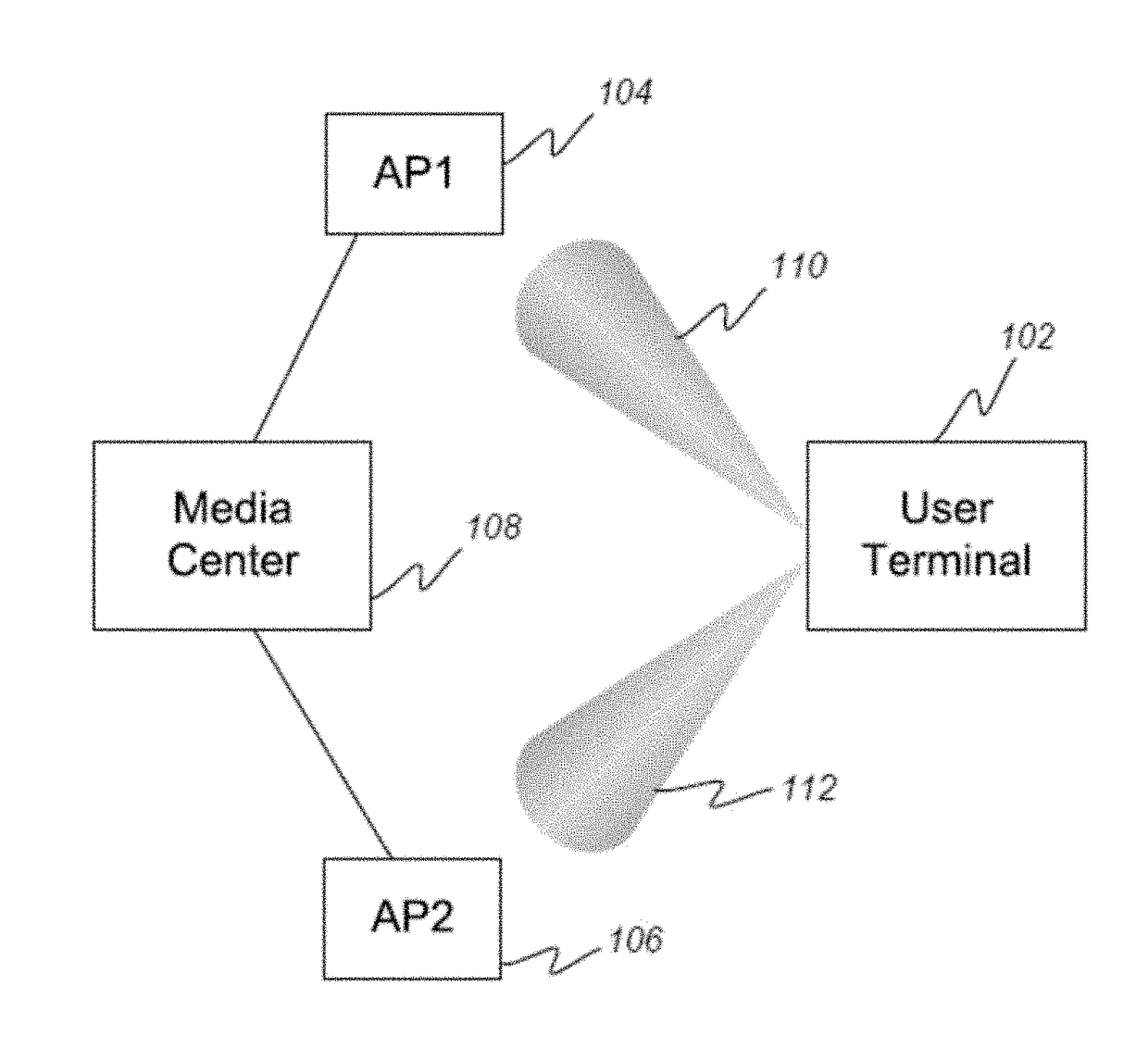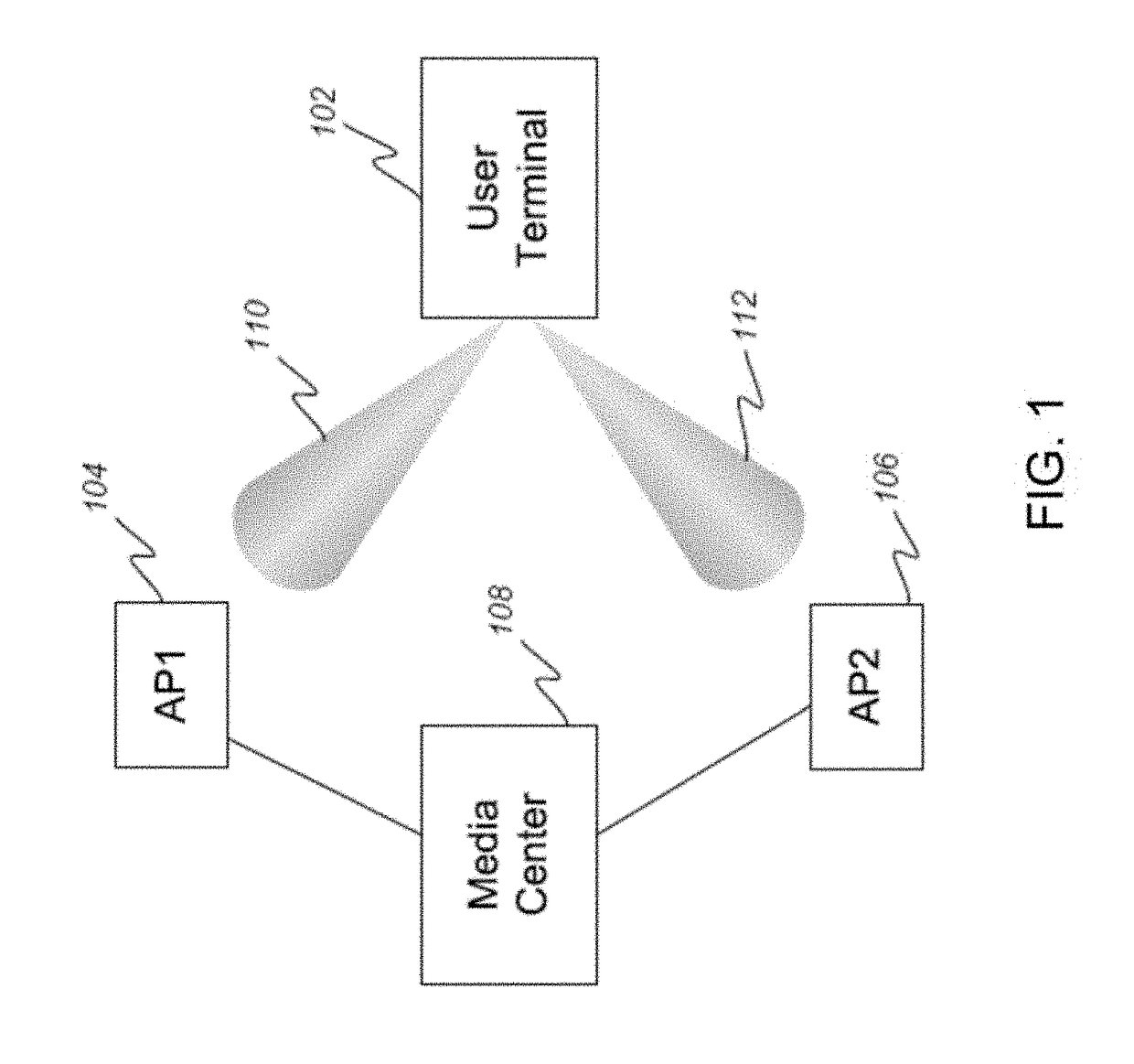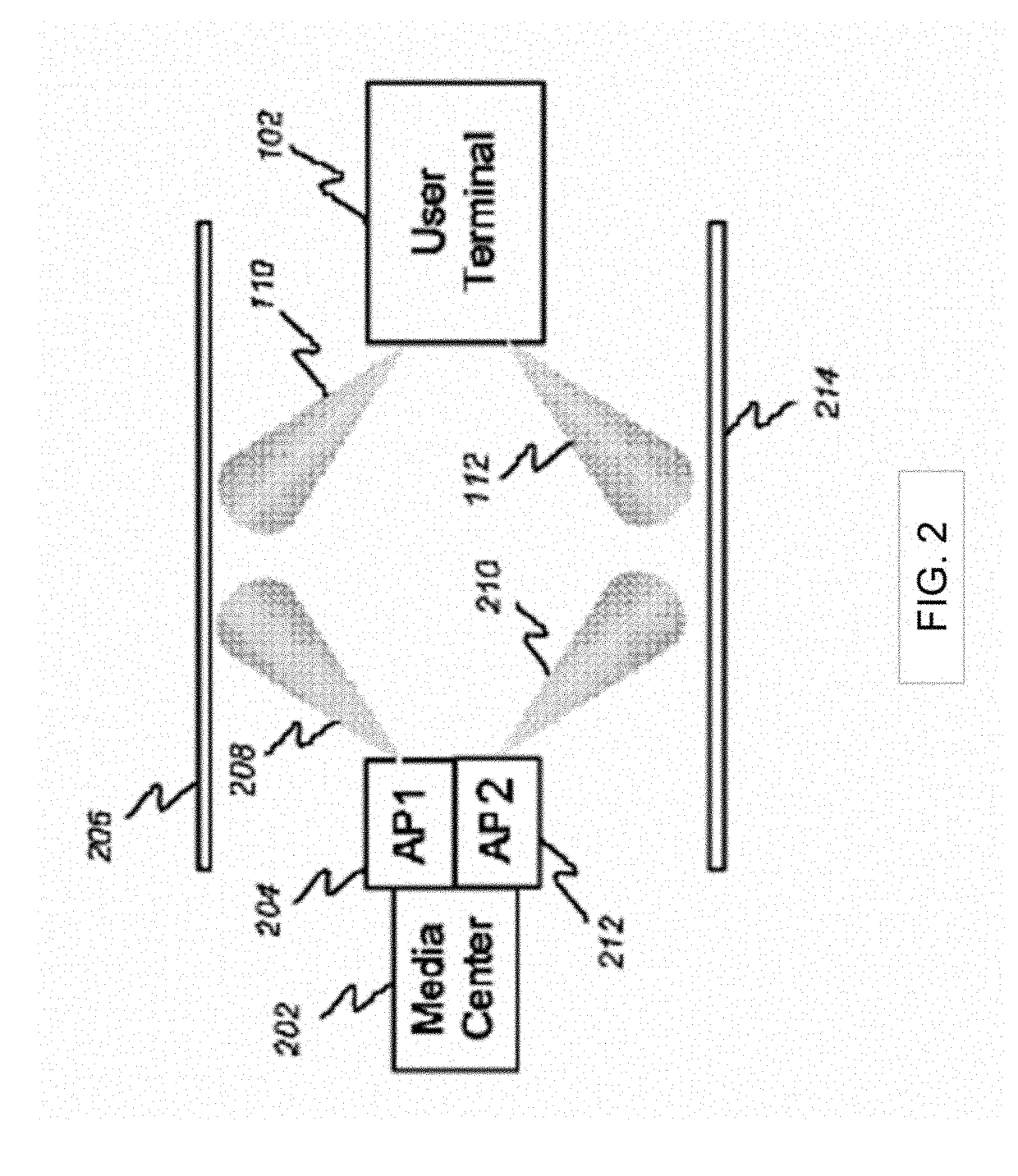Channel bonding using k-muxing and multiple-beam antenna
a channel bonding and antenna technology, applied in the field of wireless link throughput and reliability improvement, can solve the problems of limiting channel frequency choices, communication failures or excessively high error rates, network interface cards on host computers, etc., to achieve the effect of improving throughput and reliability of wireless communication, reducing interference and multi-path effects, and increasing data bandwidth
- Summary
- Abstract
- Description
- Claims
- Application Information
AI Technical Summary
Benefits of technology
Problems solved by technology
Method used
Image
Examples
Embodiment Construction
[0036]The invention provides a system for bonding multiple wireless communication channels using multi-beam directional antennas in order to improve communication bandwidth and reliability. In the detailed description that follows, like element numerals are used to indicate like elements appearing in one or more of the figures.
[0037]FIG. 1 depicts a block diagram of an embodiment of a multiple-beam wireless networking system in accordance with the present invention. A media center 108 stores data that it makes available to a wireless network over two spatially separated wireless access points 104 and 106. A user terminal 102 includes a multi-beam antenna capable of pointing narrow beams 110 and 112 in the directions to the two access points 104 and 106, respectively. The user terminal 102 includes a digital-beam-forming (DBF) processor described in more detail below with reference to FIG. 3. The DBF processor allows the construction of two spatially-separated beams that can be indep...
PUM
 Login to View More
Login to View More Abstract
Description
Claims
Application Information
 Login to View More
Login to View More - R&D
- Intellectual Property
- Life Sciences
- Materials
- Tech Scout
- Unparalleled Data Quality
- Higher Quality Content
- 60% Fewer Hallucinations
Browse by: Latest US Patents, China's latest patents, Technical Efficacy Thesaurus, Application Domain, Technology Topic, Popular Technical Reports.
© 2025 PatSnap. All rights reserved.Legal|Privacy policy|Modern Slavery Act Transparency Statement|Sitemap|About US| Contact US: help@patsnap.com



